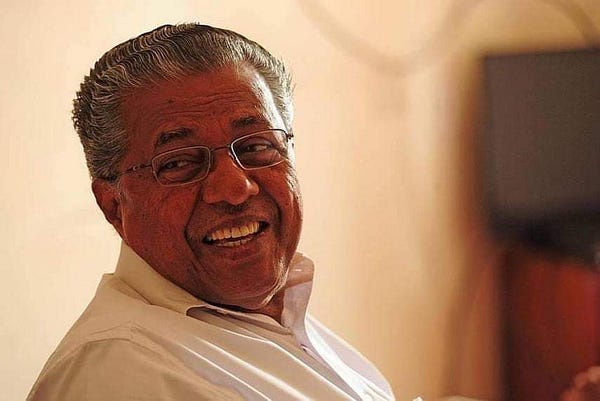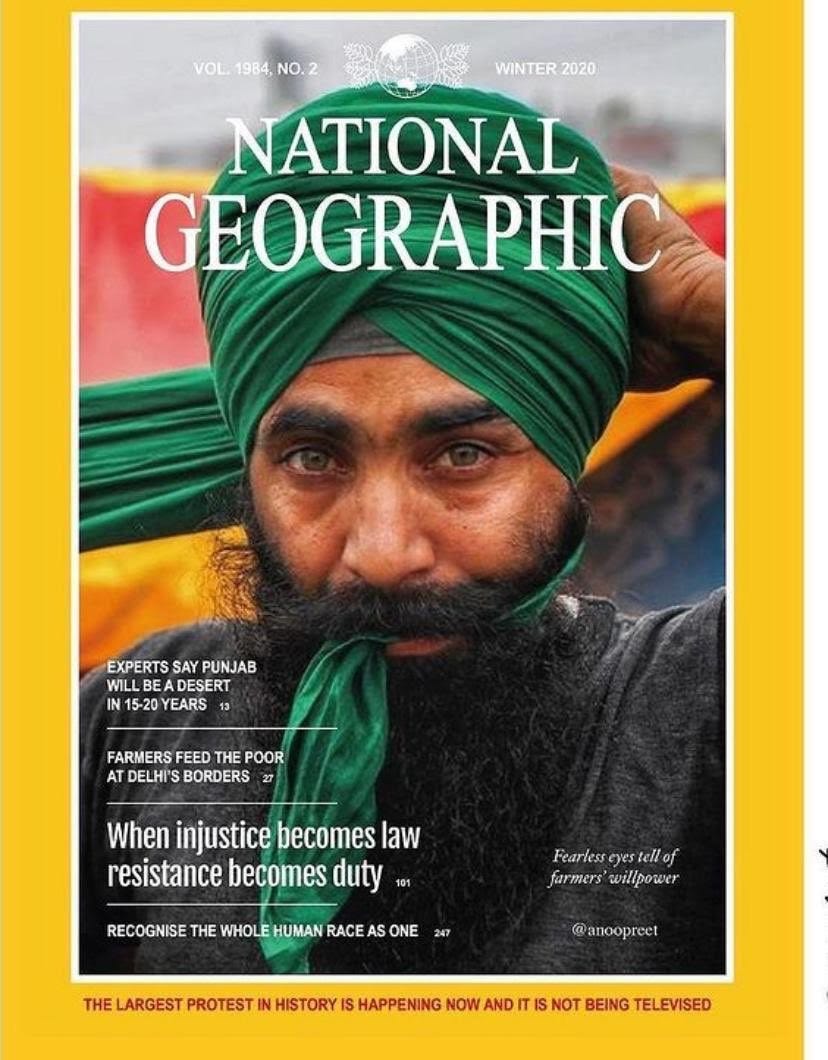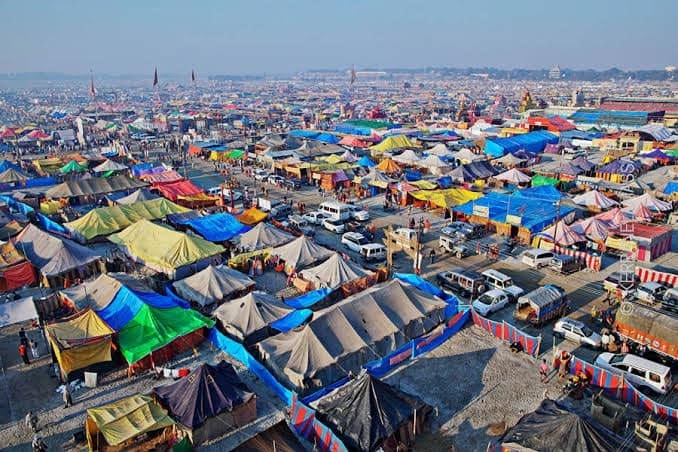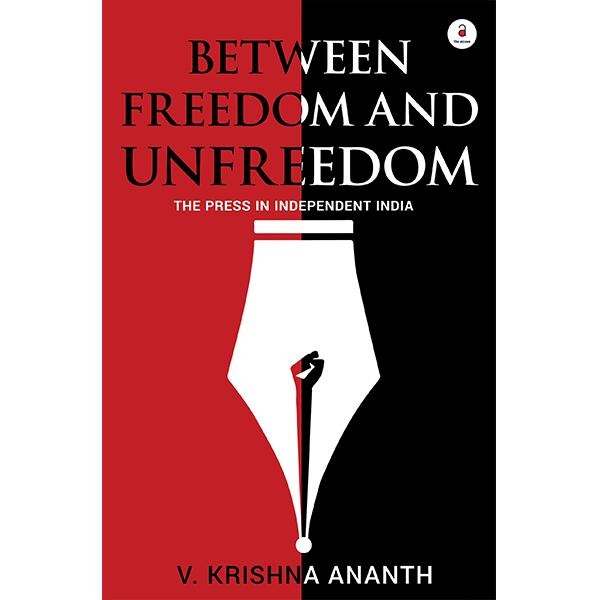The India Cable: Constitutional Challenge to ‘Love Jihad’ Law; Chennai World’s Most Surveilled City
Plus: Mystery behind Covaxin U-turn, $2.8 billion lost to internet shutdowns, bird flu back, Pragya Thakur need not appear in Malegaon case, NIA probes international marriage and finds no ‘love jihad’
From the founding editors of The Wire—MK Venu, Siddharth Varadarajan and Sidharth Bhatia—and journalists-writers Seema Chishti, Sushant Singh and Tanweer Alam. Editor: Pratik Kanjilal
Snapshot of the day
January 6, 2021
Pratik Kanjilal
Having locked down the UK yet again, Prime Minister Boris Johnson has cancelled his visit to India, where he was to be chief guest at the Republic Day parade. The BBC immediately announced its biggest educational push ever, for British children who do not have internet access ― someone at Prasar Bharati should take note. Last week, to the embarrassment of the British PM, his father applied for French citizenship in response to Brexit.
A concept cover of National Geographic magazine, showing a protester in the farmers’ agitation, has been received as authentic and circulated widely. Here’s the fact check.
The Budget session of Parliament will commence on January 29 and conclude on April 8. It will be held in two parts, January 29-February 15, and March 8-April 8. We doubt that the late Pranab Mukherjee’s advice will be followed: “PM Modi, now in his second term, must take inspiration from his predecessors and provide visible leadership, through his enhanced presence in Parliament, to avoid situations that had precipitated the parliamentary crisis we witnessed in the first term.”
Mukherjee also wrote that Modi plays up his personal equations with foreign leaders “too much” and taking it at face value is a “bit absurd”, since the national interest is always driven by “cold, hard” facts. According to the former president, the intent of Modi’s demonetisation was good but its primary objectives were not met even years after the event.
Terror accused BJP MP Pragya Thakur, who has apparently never been forgiven by PM Modi for hailing Godse, has been granted exemption from regular appearance in the Malegaon blast case of 2008 due to health and security concerns. After failing to attend hearings multiple times, she appeared before the judge on Monday. On December 19, 2020, Special Judge PR Sitre had given Thakur the “last chance” to appear. Then he forgave her.
The Modi government’s Kamdhenu Aayog, set up in February 2019 for the “conservation, protection and development of cows and their progeny”, has claimed that 800 Covid-19 patients have been cured through ‘panchgavya and ayurveda’ treatment in a clinical trial conducted in four cities across the country. Among its other amoosing claims — the killing of cattle for meat causes earthquakes.
Standup comedian Munawar Faruqui and four associates face criminal proceedings for an event held at the Cafe Munro in Indore on January 1, and have been denied bail. According to eyewitness accounts and videos from the venue, no religious jokes were cracked. Here is a detailed account of events on that day in Indore.
Former Kerala High Court judges have refuted reports that they were signatories to the campaign extending support to the implementation of the ‘love jihad’ law in UP. While a former High Court judge said that he was told about the campaign but never gave his support, another said he is not even aware of it. A statement had claimed that four former HC judges had signed the letter sent to the UP chief minister.
The Supreme Court has today agreed to hear petitions challenging the constitutional validity of the UP Prohibition of Unlawful Conversion of Religion Ordinance, 2020, and the Uttarakhand Freedom of Religion Act, 2018, issuing notices to the two states on these controversial so-called ‘anti-love jihad’ laws . The matter will be heard in a month’s time.
And the National Investigation Agency probes the union of a Chennai-Dhaka couple who studied in London, and finds no ‘love jihad’. As someone quipped, NIA now stands for Nikah Investigation Agency!
India’s panopticon cities
Chennai is the most surveilled city in the world, followed closely by Hyderabad. The two beat major cities such as London, which once enjoyed first mover advantage, Beijing and New York. A study, ‘The Top Surveillance Cities Worldwide’ conducted by Surfshark and published in the South Asia Journal, says Chennai has 657 CCTVs per sq km and 25.5 CCTVs per 1,000 people while Hyderabad has 480 CCTVs per sq km and 30 for every 1,000 people. London comes a distant fourth with 399 cameras per sq km. Not surprisingly, there are six Chinese cities in the top 10, including Beijing, Harbin and Xiamen.
Uncle Sam wants India to say nyet to Russia
With the possibility of sanctions hanging over India’s $5.4 billion deal with Russia for the S-400 air defence systems, outgoing US envoy Kenneth Juster has said that New Delhi may need to take hard decisions about the acquisition of military hardware ― a thinly veiled hint to stop buying defence equipment from Russia. The US recently imposed secondary sanctions on Turkey under the Countering America’s Adversaries Through Sanctions Act (CAATSA) for a $2.5 billion deal with Russia for S-400 systems, and experts have warned that India could face similar strictures. He also said that the US has cooperated with India to counter “aggressive” Chinese actions at the Line of Actual Control, adding that it was for the Indian government to give details of the nature of military cooperation during the ongoing eight month standoff in Ladakh.
Mysterious U-turn on vaccine
The Modi government trotted out its experts to justify the approval given to Covaxin, manufactured by Bharat Biotech in collaboration with the Indian Council of Medical Research and the National Institute of Virology, but their answers were not convincing. Especially since the records of meetings held last week by an expert committee show that its members were apprehensive about the lack of adequate data. It asked the company “to expedite the recruitment and… perform interim efficacy analysis for further consideration of restricted emergency use approval.” That was one day before they did a U-turn and greenlighted the vaccine. Did profit or posturing come before science in India’s vaccine nod?


The government has also denied an earlier claim made by the Covishield manufacturer that it has banned export of the vaccine, which is part of WHO’s COVAX programme. “Within a fortnight of the rollout of the vaccines, we will allow exports to some of our South Asian neighbours. Some of these exports will be paid for by us as gifts, and others will be supplied at roughly the same price the government will be buying the vaccines at,” the external affairs ministry told the BBC.
As the media’s spin rolls on about what has been achieved and established, former health secretary K Sujatha Rao fact-checks claims about new cold chains for vaccine delivery.

Covid-19 briefly airborne, like Mahesh Yogi
An Indian study shows that the virus can be transiently airborne, but preventive measures like wearing masks can keep one safe. The study was conducted by the Centre for Cellular and Molecular Biology, Hyderabad, and the Institute of Microbial Technology, Chandigarh. The report, which is yet to be peer-reviewed, also showed the chances of contracting the virus from the air is directly related to the number of Covid-19 positive persons in a room, their symptomatic status, duration of exposure and air circulation. The findings are based on three samples each in Hyderabad and Chandigarh.
Farmers offer curtain raiser
Instead of January 6, as decided initially, farmers have announced that their tractor march would be held at four borders of Delhi on January 7. It would offer a foretaste of a threatened tractor-borne entry into the capital on Republic Day, if the new farm laws are not rolled back.
Courtesy: @Teamfarmer_
In lawless UP, priest and disciples booked
A 50-year-old woman was gang-raped and murdered on the premises of a place of worship in a village in UP’s Badaun. The details in the FIR are ghastly. The crime was committed on Tuesday but the police report was registered only yesterday, and a priest and his two disciples were booked.
Teddy Mafia shot dead, killers beheaded
A druglord of Indian origin was shot dead at his home in South Africa in broad daylight, enraging his supporters in the community who beheaded the two suspected killers and set their bodies alight. Yaganathan Pillay, popularly known as ‘Teddy Mafia’, was shot twice in the head at his home in Shallcross, part of the sprawling Indian township of Chatsworth, near Durban. He was hugely popular in the area because he engaged in what one neighbour referred to as ‘Robin Hood’ activities, and always assisted the community with allegedly illicit earnings. Police and private security officers who responded were shot at by community members, who held them off, police spokesperson Brigadier Jay Naicker said.
Economy in contraction
“In India, the pandemic hit the economy at a time when growth was already decelerating. Output is estimated to contract by 9.6% in the fiscal year 2020/21, reflecting a sharp drop in household spending and private investment,” the World Bank said in its Global Economic Prospects report. “In India, growth is expected to recover to 5.4 per cent in 2021, as the rebound from a low base is offset by muted private investment growth, given financial sector weaknesses.”
Book extract
How the Mandal Commission changed the Indian press
V Krishna Ananth
The threat to press freedom envisaged by the Press Commission due to monopolistic tendencies that it saw developing in the wake of Independence would unveil itself in the 1990s. This happened because the press in India, whose early stages of growth were simultaneous with its adversarial role in the 1960s, was damned during the Emergency, but did revive itself into an institution speaking truth to power during the 1980s. It had also found itself a business model in these years. The scope to further consolidate on this was provided in the 1990s.
However, this prospect came with a rider and proprietors did not hesitate to accept it. The rider was the regime’s quest for stability, necessary to build the economy and the opportunities it promised to the consumers of news ― the middle classes ― and providing the basis for an ideology that detested disruption. This moment of disruption, in the Indian context, was the announcement by prime minister VP Singh, on August 7, 1990, of his government’s decision to implement a part of the recommendations of the Second Backward Classes Commission ― the Mandal Commission, as it was known ― to reserve more than a quarter of jobs in the central government for the socially and educationally backward classes.
This, as substantial research in political history and social sciences would unravel later, had the potential to unsettle the socio-political structure, and was not merely a matter involving a few thousand government jobs. The disruption, indeed, portended a shake-up in the power structure and the press in India, as an institution, seemed to react to this and an ideological shift was visible. In other words, the disruption brought about a unity of sorts between proprietors and foot soldiers in the press. The counter to this moment of disruption came from an apparently unifying movement, maturing around the same time and marked in its beginnings by the mobilization to save the Hindu faith. The roots of this, too, can be located in the 1920s, an attempt to restrict nationalism into a cultural construct rather than a unity rooted in anti-colonial economic nationalism.
As many as 400 persons, all belonging to the Scheduled Castes, embraced Islam on February 19, 1981 and this event provoked an attempt, by men cutting across the Congress and the fledgling BJP (founded only in 1980 on the ruins of the Janata Party and retrieving the core of the Bhartiya Jan Sangh, that had merged into the Janata Party in January 1977) to reinvent the nation on the basis of Hindu identity. The disruption caused by the Mandal moment was sought to be remedied. A nationwide campaign ― the rath yatra ― by BJP president LK Advani was seen by the press as a means to reinvent stability.
Rather than resting on the legacy ― drawing from the Meenakshipuram conversions and its implications ― Advani’s campaign for building a Ram temple at the site where the Babri Masjid stood helped weave the discourse around “nationalism”. Even while the target, both perceived and real, was the Muslim community, the time he chose for this campaign ― October 1990, only about a month after the Mandal moment had triggered upper caste reactions across Northern India and thereby revealed fissures within Hindu society ― lent to the press a stick with which the Mandal disruption could be beaten and contained. In other words, the press as a whole had not turned communal at that time.
The spectre of a churn in the status quo that Mandal could achieve haunted editors and their foot soldiers and was manifest in the reportage on the violent agitations in the northern Indian towns and New Delhi. A meticulously done study on the reportage revealed a pattern where the newspapers devoted far too much space and prominence to the agitation against the implementation of the Mandal Commission report, and yet did not show the same alacrity while reporting the violence that marked the rath yatra trail. In the five days between October 1 and 5, 1990, when the anti-Mandal agitation had spread all over Northern India and the rath yatra had rolled across Western India, The Indian Express had devoted about 12 times more space for reports and comments on the anti-Mandal agitation than it devoted to the violence that marked the towns that Advani had traversed. In the case of the Times of India, the proportion was about 9:1 between the anti-Mandal agitation and the rath yatra.
…Anxiety over the threat to the status quo brought the foot soldiers in the press in sync with a similar anxiety that the consumers of news and views, the middle class and the elite in the socio-economic sense, suffered from; and the editors, along with the proprietors, found it imperative to cater to the readers what they desired. And all these could easily be couched as speaking truth to power, as long as the power at that given point of time happened to be the force behind the disruption; in other words, VP Singh and the regime. Although only apparently, it seemed that the press was taking up the role of the adversary and assuming the mantle for a change.
Extracted from Between Freedom and Unfreedom: The Press in Independent India by V Krishna Ananth, The Alcove Publishers, 479 pages, Rs 599
Prime Number: $2.8 billionThat's the cost of internet shutdowns to India, with 8,927 hours of blacked out or curbed bandwidth access. India is at the top of a list of 21 countries that curbed citizens’ web access in 2020. It accounted for about three-quarters of the $4 billion lost worldwide to internet curbs, with the loss more than double that in 2019, as per a report from a UK-based digital privacy and security research group.Bird flu is back
Tens of thousands of poultry will be slaughtered after an outbreak of deadly avian influenza was found to have killed scores of birds across the country. India has witnessed devastating bird flu outbreaks in recent decades, most seriously in 2008, when millions of poultry were culled. “We have received reports of A1 influenza from 5 states - Himachal Pradesh, Haryana, Rajasthan, Madhya Pradesh, & Kerala. In Haryana, it has been transmitted to poultry as well otherwise the virus is found in wild and migratory birds” said Union Minister Sanjiv Balyan.
KCR relatives kidnapped, and rescued
In a stunning incident, three men, who are directly related to Telangana chief minister K Chandrasekhar Rao, were kidnapped from their home in Bowenpally in Hyderabad late yesterday and rescued only today from Vikarabad. The matter relates to a land dispute. Of course. All three are hockey players.
Deep Dive
Vivek Kaul delves into the RBI report Trend and Progress of Banking in India, and finds that bad loans of Indian banks over the last five years have amounted to much more than Rs 20 lakh crore.
Misinformation trends
The past year is a reminder of the mainstream media’s role in spreading misinformation. Unrestrained ‘news’ anchors screamed on television screens, feeding erroneous information to millions. From protests against the Citizenship (Amendment) Act the beginning of the year to the ongoing farmers’ protest, mainstream journalists have remained committed to airing misleading pro-government propaganda. AltNews has compiled the misinformation trends of 2020.
Op-Eds you don’t want to miss
The new marriage laws in BJP-run states like UP and MP put state power and the law itself behind majoritarian communal biases which empower regressive social mores governing marriage and fellowship. It is for the court to suo motu strike these laws down if it wants to preserve the basic structure of the constitutional edifice, says Seema Chishti (a contributor to The India Cable).
Adivasis have no option but to continue with their just struggle to protect their rights and land. But every act of resistance, no matter how peaceful or constitutional, is being met with extreme violence that the Indian government is hoping will escape wider scrutiny. That is why such repression deserves the world’s attention, writes Viginius Xaxa in The Scientific American.
The moral of the story for India is that regulators must share critical findings, including shortcomings of the vaccine evaluation process writes Dr K Srinath Reddy
It is almost forgotten that Charan Singh drafted UP land reforms legislation in the early 1950s, and introduced the Agriculture Produce Market Bill. Sugata Srinivasaraju says the farmers who made him their leader perhaps know what they are talking about.
India cannot call itself a constitutional democracy until social interference in matters of conscience is eliminated from its laws, once and for all, says Gautam Bhatia, calling out the UP anti-conversion law as unconstitutional.
In 2020, Kashmir’s journalists had not only to overcome the challenges of the coronavirus pandemic but also deal with legal summons, harassment, beatings and grief, writes Saqib Mugloo.
Three decades after the birth of the Human Development Index, EPW opines that India’s HDI scores can be substantially enhanced if a politically committed government rolls out inclusive policies that strengthen public health, education and nutrition, and end gender discrimination to usher in a more egalitarian order.
On corporatism masked as farm laws, Abhijit Sengupta quotes Mussolini, who had said, “Fascism should more appropriately be called Corporatism because it is the merger of state and corporate power.”
Suresh Menon recalls what Richard Dawkins wrote on the cricketing genius Tiger Pataudi, who would have been 80 yesterday.
Listen up
In Kashmir, citizens suffered government high-handedness with the longest internet shutdown ever in a democracy, of 213 days, just before the pandemic. Hear about experiences of being digitally left “in the dark” for the podcast Digital Rights Explored: Local Fights, Global Perspectives.
Watch Out
A thoughtful and informative interview with Dr Gagandeep Kang of the Wellcome Trust Research Laboratory at the Christian Medical College, Vellore, about questions regarding Covaxin and Covishield, the vaccines cleared by the Indian regulator.
Desi angst, Marxist glee
South Asian-British actor Sacha Dhawan talks about anxiety and being South Asian. “The pressure of being British South Asian,” he says, “is that it feels like you’re not just doing it for yourself but the entire community. It feels like your success is everyone’s success, but your failures are also everyone’s failure. It shouldn’t be like that any more. You should feel confident enough to take risks.”
And who says Marxists are humourless?


That’s it for today. We’ll be back with you tomorrow, on a device near you. If The India Cable was forwarded to you by a friend (perhaps a common friend!) book your own copy by SUBSCRIBING HERE.



